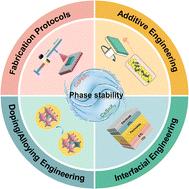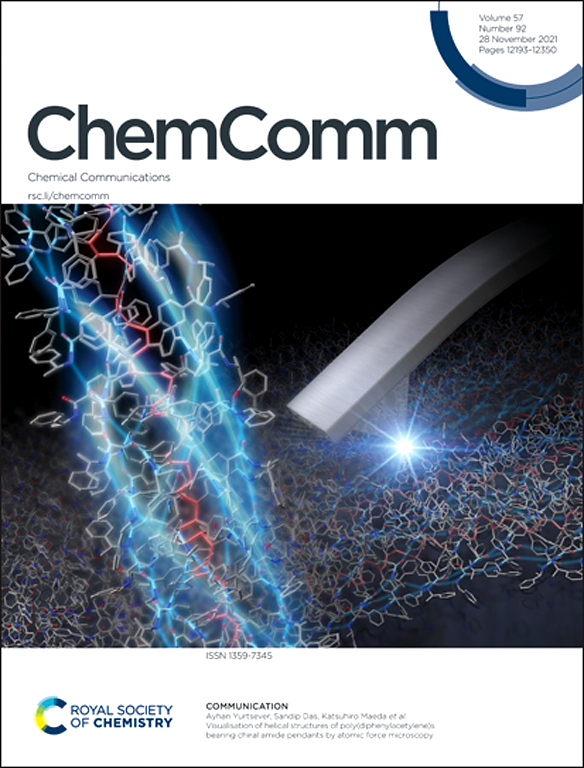实现耐用的全无机过氧化物太阳能电池:从铅基到无铅
IF 4.3
2区 化学
Q2 CHEMISTRY, MULTIDISCIPLINARY
引用次数: 0
摘要
有机-无机金属卤化物过磷酸盐太阳能电池(PSCs)的出现引起了光伏界的广泛关注,因为它们的功率转换效率在短短 15 年间从 3.8%快速增长到 26.7%。然而,由于有机阳离子和无机板之间的氢键非常脆弱,这些有机-无机混合化合物在热和光应力下的长期运行稳定性较差。这就促使人们探索用无机铯(Cs)阳离子替代挥发性有机阳离子,从而研制出更坚固的全无机替代品,以抵御外部刺激。尽管铯阳离子与金属卤化物框架之间的离子相互作用得到了加强,但这些基于铯的全无机包晶在室温下往往会发生自发相变,从光活性黑色相转变为非包晶黄色相,从而大大降低了它们的光电性能。因此,人们为稳定 CsPbI3 的黑相付出了巨大努力,而其锡基类似物 CsSnI3 的相不稳定问题尚未解决。本视角总结了稳定 CsPbI3 易褪色相的经验进展,旨在提供有用的指导原则,以加速开发相稳定的 CsSnI3,用于持久的无铅光伏应用。最后,概述了余下的挑战和未来的研究机会,为实现高效、耐用的全无机包晶太阳能电池的实际应用提供了路线图。本文章由计算机程序翻译,如有差异,请以英文原文为准。

Toward durable all-inorganic perovskite solar cells: from lead-based to lead-free
Organic–inorganic metal halide perovskite solar cells (PSCs) have attracted extensive attention from the photovoltaic (PV) community due to their fast-growing power conversion efficiency from 3.8% to 26.7% in only 15 years. However, these organic–inorganic hybrid PSCs suffer from inferior long-term operational stability under thermal and light stress, due to the fragile hydrogen bonds between organic cations and inorganic slabs. This motivates the exploration of more robust all-inorganic alternatives against external stimuli, by substituting inorganic cesium (Cs) cations for volatile organic cations. Despite reinforced ionic interaction between Cs cations and metal halide frameworks, these Cs-based all-inorganic perovskites tend to undergo spontaneous phase transition from photoactive black phases to non-perovskite yellow phases at room temperature, significantly deteriorating their optoelectronic performance. Thus, tremendous efforts have been made to stabilize the black phase of CsPbI3, while the phase instability issue of the tin-based analogue of CsSnI3 has not been resolved yet. This highlight article summarizes the empirical advances in stabilizing the metastable phases of CsPbI3, aiming to provide useful guidelines to accelerate the development of phase-stable CsSnI3 for durable lead-free PV applications. Finally, the remaining challenges and future research opportunities are outlined, providing a road map to realize efficient and durable all-inorganic perovskite solar cells towards practical applications.
求助全文
通过发布文献求助,成功后即可免费获取论文全文。
去求助
来源期刊

Chemical Communications
化学-化学综合
CiteScore
8.60
自引率
4.10%
发文量
2705
审稿时长
1.4 months
期刊介绍:
ChemComm (Chemical Communications) is renowned as the fastest publisher of articles providing information on new avenues of research, drawn from all the world''s major areas of chemical research.
 求助内容:
求助内容: 应助结果提醒方式:
应助结果提醒方式:


